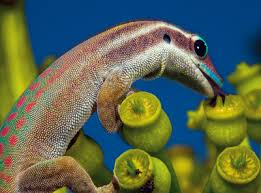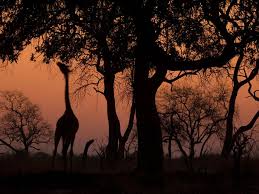Photo Of The Day National Geographic Biogrphy
Growing up on the flatlands of southern Minnesota is not a particularly auspicious start for a world-class mountaineer and adventure photographer.
"I was 12 when I had my first epiphany about the mountains. I went on a family vacation to Glacier National Park. The beauty of the West and the mountains of Glacier National Park really blew my mind. I was changed forever," says Jimmy Chin. "I always knew I would return, and I did. I spent two summers working in Glacier when I was 18 and 19, running up as many peaks as possible. I had also started rock climbing in Joshua Tree. Spending time in the mountains and rock climbing became my passions."
Photography came later and could be described as a fortunate accident. During a climbing trip to Yosemite, where he was training for an upcoming expedition to Pakistan, Chin took a photo with a friend's camera of El Capitan. His friend submitted some photos of the climb to an outdoor clothing company and the photo editor bought one image: the photo Chin had taken. Encouraged by the sale of his first photo, Chin bought his own camera and hasn't looked back.
His dramatic photography of human endeavors in extreme mountain environments has been published in magazines such as National Geographic, Adventure, Outside, Men's Journal, ESPN Magazine, The North Face, and Patagonia. His photography has won many accolades and awards, and in just a few years he has become recognized as one of the best extreme mountain photographers in the profession.
Besides wild mountain locations, what distinguishes Chin's photography is his strong sense of composition. It is a rare gift to be able to pick up a camera for the first time and shoot a publishable photo. But Chin was not new to composing within a frame. Chin's Chinese-American parents wanted to instill the family's culture in their son. They spoke Chinese at home, and taught Chin, from age five until he was a teenager, to draw Chinese characters and calligraphy using a brush and ink. As Chin remembers: "I developed a talent for drawing the characters. I enjoyed drawing, but I loved the discipline of drawing characters. They demanded attention to detail, and an eye for balancing the different symbols inside the frame. The symbol for water, for example, has to be done perfectly or it will appear out of balance." Chin attributes his ease with photo composition to his many years of studying and drawing Chinese characters. "When I started shooting photos I didn't really think too much about composition; it came naturally."
Something else that came to Chin naturally is his exceptional climbing and skiing ability. His ease on rocks and snow in the high mountains has allowed him to become the ultimate practitioner of what the late photographer Galen Rowell termed "participatory photography." Chin is able to carry a camera where few dare to go, as well as return with artfully crafted images. He paces himself carefully on expeditions, balancing his role as a team member with the demands of shooting assignment photos. Chin feels that one of the most important parts of his job on any expedition is to first be a solid, reliable team member and climber—the photography comes second. "The success of the expedition and safety are the priorities. As a climber, you face a lot of challenges on these expeditions. As a photographer, one of the great challenges is trying to be creative under fairly stressful conditions. You try to be smart about what you are shooting by anticipating the key moments and being efficient with your creative energy as well as your physical energy."
Chin participates in and shoots about three or four major expeditions a year. "No two expeditions are the same, so you can't preconceive how an expedition will unfold. Often, I will make a shot list before a trip and continually revise and add to it during the trip. These lists help remind me of potential conceptual photos that might capture such ideas as teamwork, overcoming challenges, discovery, adventure, and success. Photographing an expedition is like building a film—it's storytelling. I always look for transitional moments such as arriving at base camp, establishing climbing camps, the big storm, and summit day." Chin employs many strategies, but making the best of where he positions himself is key. "I try to be efficient in my shooting. If I run ahead of the group to shoot, I'll photograph them walking toward me, then I'll drop to the ground and shoot wide to get close-ups, cutaways, or an interesting angle of the boots and crampons as they walk past me, and then I'll recompose for another shot as they walk away into the landscape. From one position I have shot three unique compositions."
Chin's favorite photo moment was at the end of an expedition to discover the birthing grounds of the endangered chiru antelope on China's Chang Tang Plateau. Among the expedition members was Chin's mentor Galen Rowell. When climbing a nearby mountain, Chin's team had to chop a hole through a snow cornice just below the summit. "I had just poked my head through the hole," says Chin. "I looked down the ridge and saw Galen climbing toward me. My feet were dangling in space but I had my arms, ice axe, and camera free. I should have climbed out of the hole for a more secure footing, but I knew the moment would be lost, so hanging on by one arm I squeezed out three shots. One of them ended up as a two-page spread in National Geographic."



Growing up on the flatlands of southern Minnesota is not a particularly auspicious start for a world-class mountaineer and adventure photographer.
"I was 12 when I had my first epiphany about the mountains. I went on a family vacation to Glacier National Park. The beauty of the West and the mountains of Glacier National Park really blew my mind. I was changed forever," says Jimmy Chin. "I always knew I would return, and I did. I spent two summers working in Glacier when I was 18 and 19, running up as many peaks as possible. I had also started rock climbing in Joshua Tree. Spending time in the mountains and rock climbing became my passions."
Photography came later and could be described as a fortunate accident. During a climbing trip to Yosemite, where he was training for an upcoming expedition to Pakistan, Chin took a photo with a friend's camera of El Capitan. His friend submitted some photos of the climb to an outdoor clothing company and the photo editor bought one image: the photo Chin had taken. Encouraged by the sale of his first photo, Chin bought his own camera and hasn't looked back.
His dramatic photography of human endeavors in extreme mountain environments has been published in magazines such as National Geographic, Adventure, Outside, Men's Journal, ESPN Magazine, The North Face, and Patagonia. His photography has won many accolades and awards, and in just a few years he has become recognized as one of the best extreme mountain photographers in the profession.
Besides wild mountain locations, what distinguishes Chin's photography is his strong sense of composition. It is a rare gift to be able to pick up a camera for the first time and shoot a publishable photo. But Chin was not new to composing within a frame. Chin's Chinese-American parents wanted to instill the family's culture in their son. They spoke Chinese at home, and taught Chin, from age five until he was a teenager, to draw Chinese characters and calligraphy using a brush and ink. As Chin remembers: "I developed a talent for drawing the characters. I enjoyed drawing, but I loved the discipline of drawing characters. They demanded attention to detail, and an eye for balancing the different symbols inside the frame. The symbol for water, for example, has to be done perfectly or it will appear out of balance." Chin attributes his ease with photo composition to his many years of studying and drawing Chinese characters. "When I started shooting photos I didn't really think too much about composition; it came naturally."
Something else that came to Chin naturally is his exceptional climbing and skiing ability. His ease on rocks and snow in the high mountains has allowed him to become the ultimate practitioner of what the late photographer Galen Rowell termed "participatory photography." Chin is able to carry a camera where few dare to go, as well as return with artfully crafted images. He paces himself carefully on expeditions, balancing his role as a team member with the demands of shooting assignment photos. Chin feels that one of the most important parts of his job on any expedition is to first be a solid, reliable team member and climber—the photography comes second. "The success of the expedition and safety are the priorities. As a climber, you face a lot of challenges on these expeditions. As a photographer, one of the great challenges is trying to be creative under fairly stressful conditions. You try to be smart about what you are shooting by anticipating the key moments and being efficient with your creative energy as well as your physical energy."
Chin participates in and shoots about three or four major expeditions a year. "No two expeditions are the same, so you can't preconceive how an expedition will unfold. Often, I will make a shot list before a trip and continually revise and add to it during the trip. These lists help remind me of potential conceptual photos that might capture such ideas as teamwork, overcoming challenges, discovery, adventure, and success. Photographing an expedition is like building a film—it's storytelling. I always look for transitional moments such as arriving at base camp, establishing climbing camps, the big storm, and summit day." Chin employs many strategies, but making the best of where he positions himself is key. "I try to be efficient in my shooting. If I run ahead of the group to shoot, I'll photograph them walking toward me, then I'll drop to the ground and shoot wide to get close-ups, cutaways, or an interesting angle of the boots and crampons as they walk past me, and then I'll recompose for another shot as they walk away into the landscape. From one position I have shot three unique compositions."
Chin's favorite photo moment was at the end of an expedition to discover the birthing grounds of the endangered chiru antelope on China's Chang Tang Plateau. Among the expedition members was Chin's mentor Galen Rowell. When climbing a nearby mountain, Chin's team had to chop a hole through a snow cornice just below the summit. "I had just poked my head through the hole," says Chin. "I looked down the ridge and saw Galen climbing toward me. My feet were dangling in space but I had my arms, ice axe, and camera free. I should have climbed out of the hole for a more secure footing, but I knew the moment would be lost, so hanging on by one arm I squeezed out three shots. One of them ended up as a two-page spread in National Geographic."
Photo Of The Day National Geographic 
Photo Of The Day National Geographic 
Photo Of The Day National Geographic 
Photo Of The Day National Geographic 
Photo Of The Day National Geographic
Photo Of The Day National Geographic 
Photo Of The Day National Geographic 
Photo Of The Day National Geographic
Photo Of The Day National Geographic 
Photo Of The Day National Geographic 
Photo Of The Day National Geographic 
Photo Of The Day National Geographic 
Photo Of The Day National Geographic 
Photo Of The Day National Geographic
Photo Of The Day National Geographic 
Photo Of The Day National Geographic 
National Geographic's New Infinite Photograph